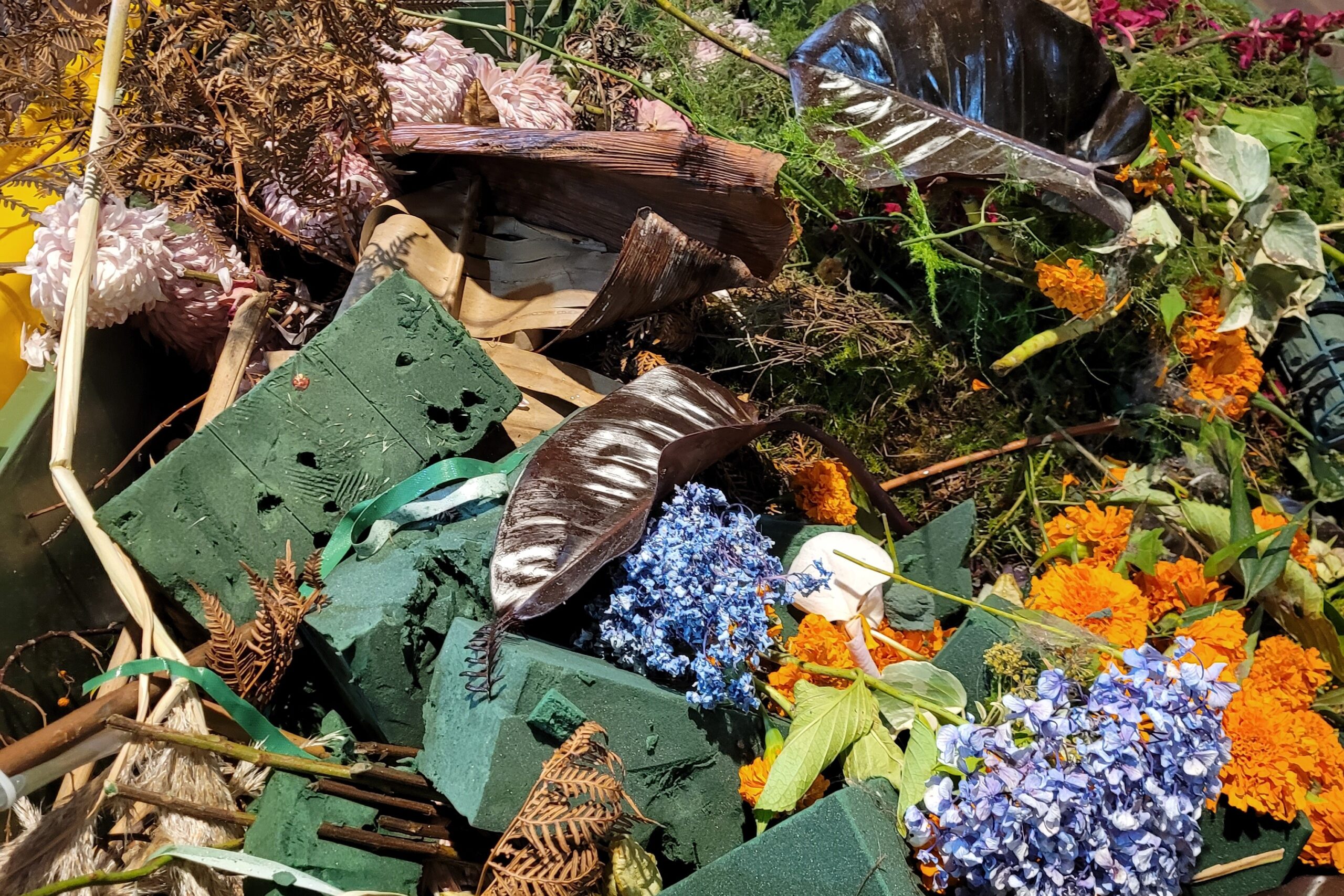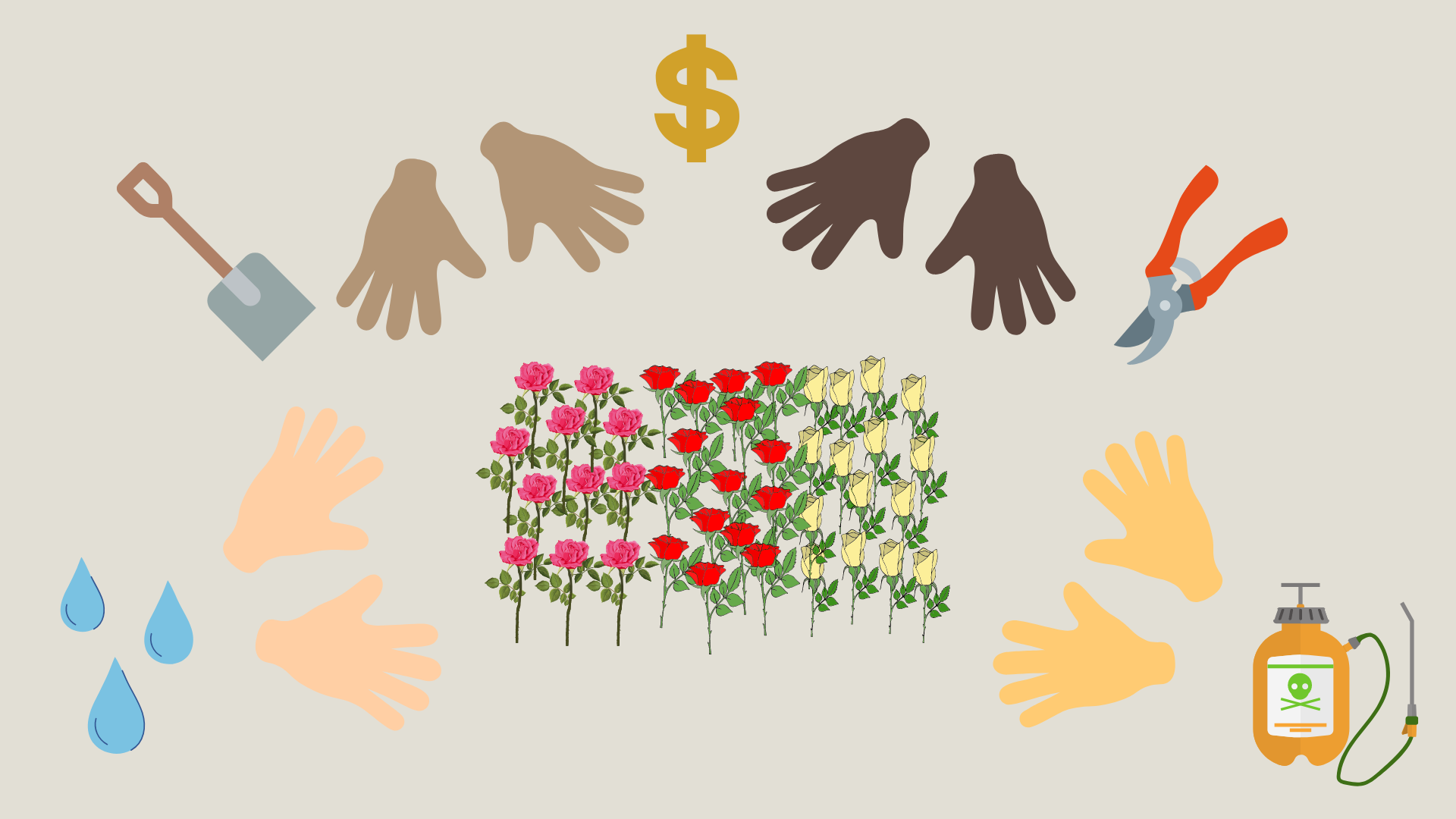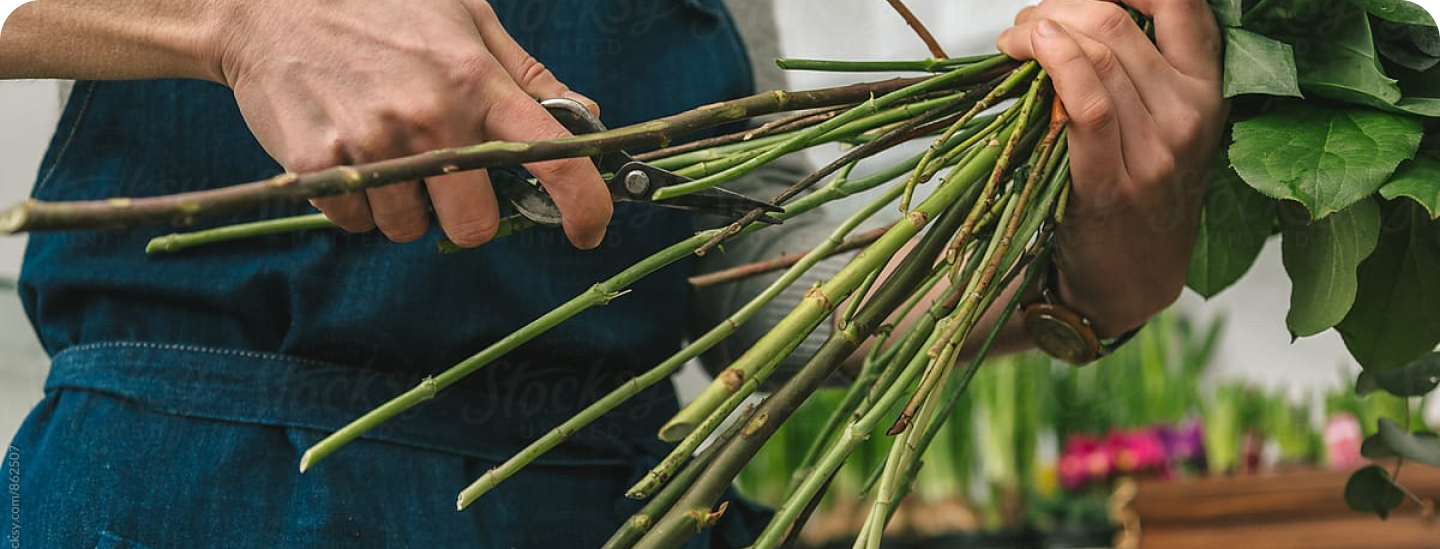The problems
In many ways, floristry is a problem for the environment, and in some cases, for people too.

Modern floristry and floral design are unsustainable in different ways.
It is hard to imagine that cut flowers could be a problem.
After all, flowers are products of nature, they haven’t been invented by humans.
But floristry is a problem for the environment. In some cases, it is a problem for people working in different parts of the supply chain too.
Much of this stems from the fact that flowers are delicate, perishable products.
Excess packaging and waste
Flower growers and florists use different materials and methods to keep flowers fresh for longer.
Since the 1960s, plastic floral foam has been the medium of choice for professional florists and home decorators. From manufacture through to disposal, it is a problem for the environment.
Add to this a world of other single-use plastic trims and decorations: wraps, ribbons, vessels, bags – as well as things like balloons and stuffed toys. Sometimes the volume of packaging around the flowers far exceeds the actual flowers.
And nearly all of this is single-use and bound for landfill.
Carbon footprints
Late last century, the global flower growing industry expanded enormously. Much investment was made in establishing flower growing centres in countries with climates favourable for growth, including Colombia, Ecuador, Kenya and Ethiopia.
However, to reach customers in Europe and North America, the flowers travel many thousands of kilometres. The delicate, perishable nature of flowers means that they must move quickly via refrigerated ‘cold chain’ transport systems – dramatically increasing the flowers’ carbon footprint.
Unsustainable farming methods – such as monoculture planting that depletes soil and excessive use of fertiliser – also contribute to the footprint.

Flowers must be kept very cool during transport.

Refrigeration increases transport carbon emissions.
Chemicals
Flowers are exposed to chemicals at many stages of their life cycle. The most problematic chemicals are pesticides, which are used to protect crops against pests.
Pesticides vary a lot in their chemical composition, and some are more toxic than others for animals and humans. But, in general, exposure to pesticides can cause a range of health problems – and the people most at risk work in agricultural settings.
Flowers can also be exposed to chemicals after being harvested. Some countries require fumigation to ensure imported flowers do not bring in unwanted pests or disease. ‘Devitalisation’ procedures are chemical treatments that kill the plant tissue so it can’t be grown in another country.
People
Not everyone in the flower supply chain is guaranteed safe and fair working conditions. If we are buying cheap flowers in a country a long way from where they were grown, then we need to ask how those flowers came to be so affordable, especially with expensive air freight factored in.
Like many industries, the cut flower world is starting to improve its systems with improved regulation. Many producers are putting processes in place throughout their supply chains to improve conditions for employees. But these processes are still evolving, and there is much work still to do.

Pesticides can cause a range of health problems for people unsafely exposed in agricultural setting.

Not everyone in the flower supply chain is guaranteed safe and fair working conditions.
